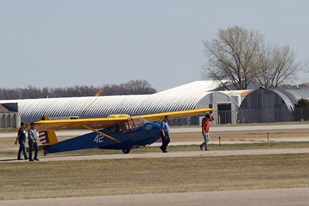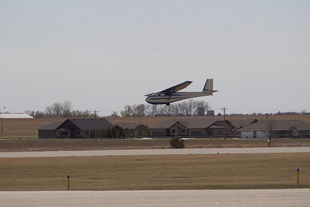Aviation community members are passionate about sharing flight with the younger generation and working to remove the barriers that keep aspiring aviators from living the dream.
Jim Hanson, an FBO operator and the manager of Minnesota’s Albert Lea Airport, is an example. Hanson, a pilot for 51 years who writes for the Midwest Flyer aviation journal, believes it isn’t enough to simply facilitate youth aviation education in schools. It’s also necessary, he says, is to "teach the teachers"so that they can avoid pitfalls of incomplete knowledge when imparting aviation to eager-to-fly students.
In April, Hanson and other volunteer pilots created an opportunity to achieve that goal and help get students and teachers "into the air at minimal cost." The solution was to use three gliders sent airborne by the auto-launch or "car tow" method, and two motor gliders. And he got the chance to "beta-test" his theories about teaching aviation to teachers during the event April 17 to 19 at the regional airport in Watertown, South Dakota, that gave some practical flight and ground-crew experience to aviation maintenance technology students from Watertown’s Lake Area Technical Institute.
The educators drawn to Watertown for the opportunity to boost their aviation knowledge and sample glider and motor-glider flight were 25 teachers of science, technology, engineering, and math—the so-called STEM subjects—recruited at a STEM conference by Greg Klein, director of the technical institute.

Describing in a telephone interview what sometimes happens when educators’ lack current information about aviation, Hanson related examples of cases in which prospective student pilots were turned back by hearing misconceptions about what was required to become a pilot. A related problem, Hanson said, was the dilemma of aviation organizations with an educational component to their missions having difficulty gaining access to schools to make presentations out of a concern that the groups had an "agenda" beyond introducing students to aviation.
The teaching-the-teachers portion of the glider event "couldn’t have gone better," Hanson said. Until the educators attended, many had not known about industry concerns about potential pilot shortages. Nor were many aware just how many educational institutions offer aviation programs—information that helped dispel their antiquated notions of constrained access to aviation education for would-be pilots.
"It was an eye-opener for teachers," he said. "They had no idea."
Hanson demonstrated the link between aviation and STEM education with four sample aviation lesson plans he designed for age-appropriate presentation to classes.
The lesson plan on weight-and-balance concepts taps basic arithmetic. When you move on to solve the kinds of weight-shift problems that an airline dispatcher might have to handle, you have entered the realm of calculus, he explained to the educators.

Wind triangles apply concepts from trigonometry and geometry. Teachers learned, as pilots do, about wind vectors; drift angles and how those changing variables affect an aircraft’s groundspeed.
Having the teachers preflight an aircraft was an especially teachable moment, he said, pointing out the opportunity to "see the camber of the wing, see the aspect ratio—it was one of the best things we did."
Hanson was heartened by the enthusiasm of the teachers, who drove from about an hour and a half to eight hours to attend the session. Many expressed interest in returning next year.
Bryan Budds, AOPA’s Great Lakes regional manager, said he agrees that demonstrating the link between the academic subjects included in STEM and aviation career opportunities is an important step toward encouraging aviation be included in secondary school education curricula.
"AOPA will continue to work with local aviation-oriented programs to help build awareness for careers in the STEM field, and in aviation specifically," he said.








